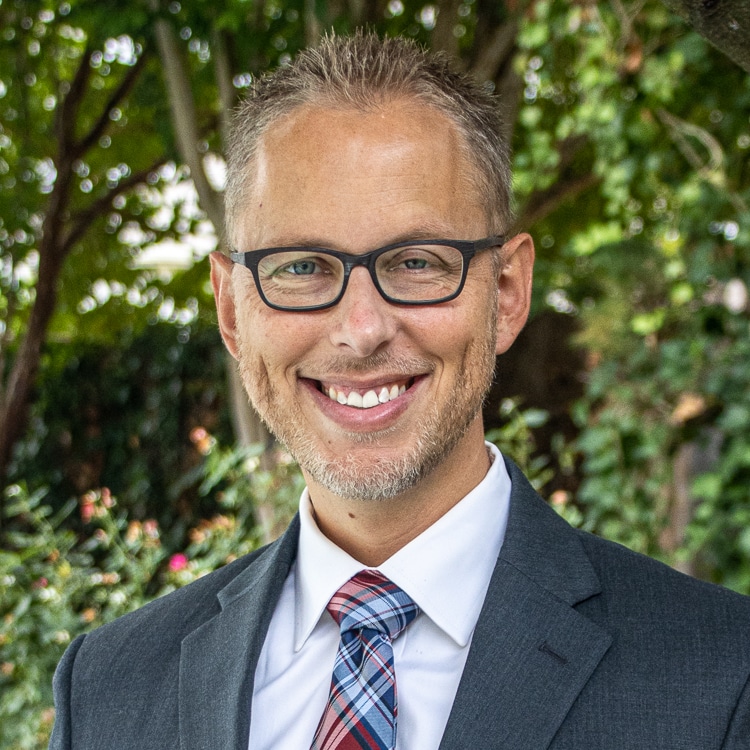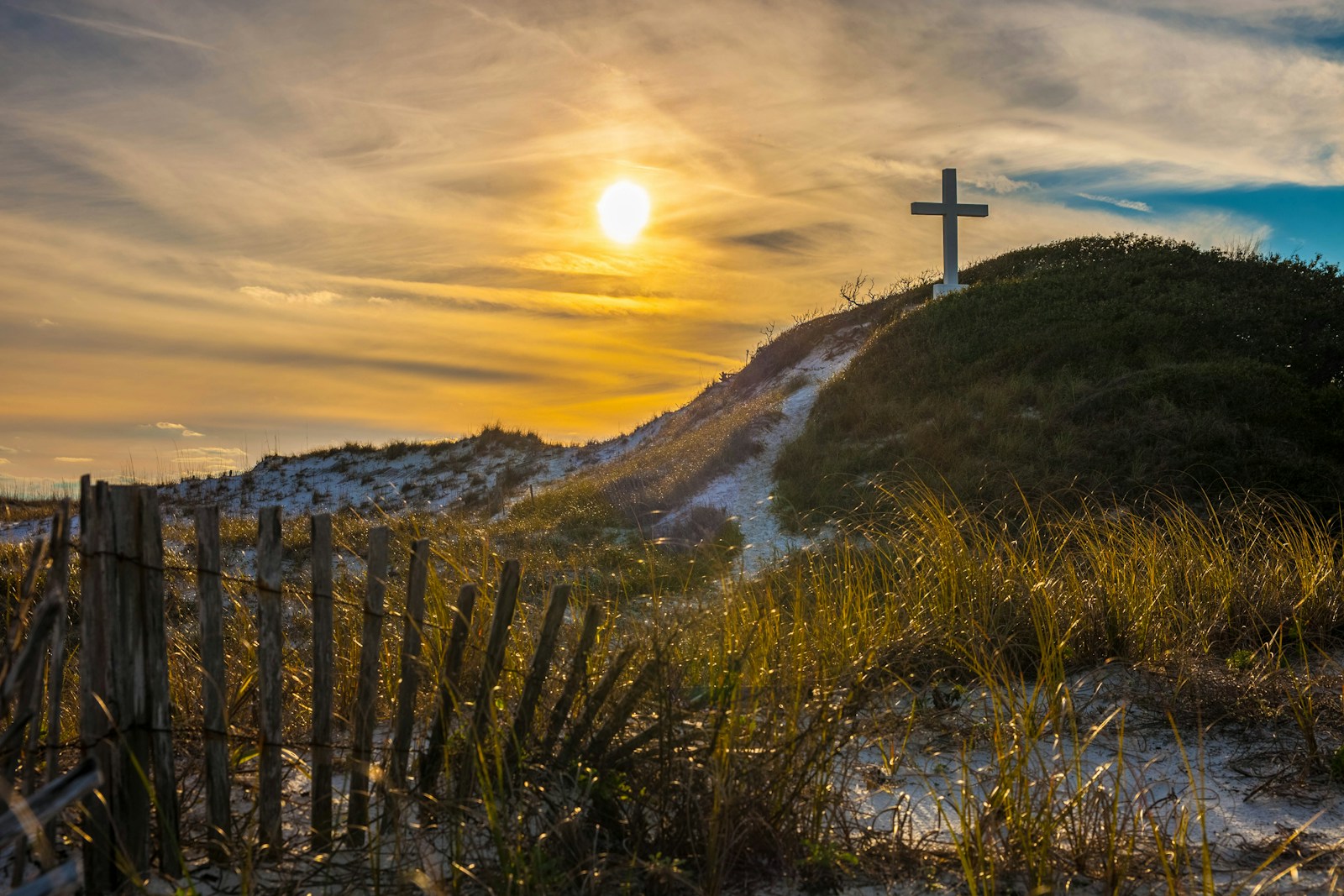According to Hebrews 12:25–29, acceptable worship is that which is regulated by Scripture alone. The doctrine of Sola Scriptura finds its fullest expression in biblically-regulated worship.
But not only that, so also the public worship of God is the fullest expression of justification by grace alone through faith alone in Christ alone.
These doctrines are also embedded in that word “acceptable.” You see, simply by virtue of our sin nature, we are inherently not acceptable to God. And so the question must be asked, how is it that we sinners can approach God to offer him acceptable worship in the first place?
By grace alone
Well the first part of the answer is found in the opening phrase of verse 28: “let us be grateful.” Importantly, the word translated “grateful” is the Greek word charis, which mean’s “grace.” So the text literally reads, let us have grace. Idiomatically, the expression “have grace” can mean “be grateful,” but we ought not miss the essential connection between thankfulness and grace. In fact, the Greek word most often translated thanksgiving is the word eucharistia—the reality of grace is baked right into the idea of thanksgiving. We are to be grateful—we ought to worship—because we are receiving something that we did not earn or merit—that’s grace.
Worship is not something that we initiate. We do not invite God down to us in worship; we do not perform for God in worship. No, worship is a response to something that we are receiving from God by grace alone.
Worship is a response to something that we are receiving from God by grace alone.
Which is, of course, exactly what the author continues to say: “let us have grace”—why?—because “we are receiving a kingdom that cannot be shaken. We are receiving this blessing, not on the basis of any merit of our own. We are receiving this blessing by grace alone. And on that basis, we offer to God acceptable worship.
In Christ alone
But second, what is it that we are receiving by grace alone? What is this kingdom that cannot be shaken? Well, the author has just described for us this unshakable kingdom beginning in verse 22.
But you have come to Mount Zion and to the city of the living God, the heavenly Jerusalem, and to innumerable angels in festal gathering, and to the assembly of the firstborn who are enrolled in heaven, and to God, the judge of all, and to the spirits of the righteous made perfect, and to Jesus, the mediator of a new covenant, and to the sprinkled blood that speaks a better word than the blood of Abel.
Hebrews 12:22–24
This unshakable kingdom is the promised heavenly kingdom. The heavenly city. The heavenly sanctuary where angels and saints surround the throne in perpetual worship. That is what we are receiving. In fact, that is what, according to verse 22, we have come to.
The Greek word translated “you have come”—proserchomai—is a word that appears over and over again in the book of Hebrews; it is a central theme in the book, most often translated “draw near.”
This idea appears in the three primary climaxes of the author’s argument. The first is found in 4:16, which says, “Let us then with confidence draw near (same term as chapter 12—proserchomai) to the throne of grace.” The second is found in chapter 10, where the author says, “Let us draw near with a true heart in full assurance of faith.” And the final climax of the book is here in 12:22, which says, “But you have come”—proserchomai—to Mount Zion.”
Drawing Near to God in Worship
So what is the importance of this command? What does “drawing near” mean? This word, proserchomai, is a term that “is used exclusively of an approach to God.”
This idea of drawing near to God permeates the storyline of Scripture. It is what Adam and Eve enjoyed as they walked with God in the cool the day (Gen. 2:8). It is described in Exodus 19:17 when Moses “brought the people out of the camp to meet God” at the foot of Mt. Sinai. It is what Psalm 100 commands of the Hebrews in Temple worship when it says, “Come into his presence with singing and into his courts with praise.” It is what Isaiah experienced as he entered the heavenly throne room of God and saw him high and lifted up.
To draw near to God is to enter his very presence, to bask in his glory, to have perfect communion with him in his presence. To draw near to God is the essence of worship.
To draw near to God is the essence of worship.
We Cannot Draw Near Because of Sin
But again, how can sinners draw near to a holy, sinless, just, and righteous God? How can we receive this unshakable kingdom? How can we come to the heavenly sanctuary? How can sinners offer to God acceptable worship? All of our righteousness is like filthy rags.
The fall of mankind into sin destroyed the possibility of drawing near to God. After Adam and Eve sinned they no longer enjoyed the privilege of walking with God in the garden; instead they hid from him in fear and desperately tried to cover their guilt with leaves. And ever since that time, any attempt to draw near to God results in a profound recognition of guilt and unworthiness. The Israelites experienced this when they drew near to Mt. Sinai; when they witnessed the majesty and greatness and white-hot holiness of God, they trembled in fear and begged Moses to go in their behalf. This is the reason that although God inhabited the holy place in the temple, no person could enter his presence except the high priest once a year on the Day of Atonement. This is what Isaiah experienced when he saw the Lord high and lifted up in all of his glory and holiness and cried out with, “Woe is me! For I am undone; for I am a man of unclean lips, and I dwell in the midst of a people of unclean lips; for my eyes have seen the King, the Lord of hosts!”
The problem is that we have no right to draw near to God; we do not have access to him because of our sin. The only way God enabled people to partially draw near to him was through temporary sacrifices, and even then there were barriers keeping people from the very presence of God himself; and we know what happens if you even touch the symbol of God’s presence, the ark—Remember Uzzah? Even Psalm 100 calls people to come only into the outer courts of the Temple, not into the actual presence of God. Old covenant people had no direct access.
But Hebrews tells us that we have come, not just to the outer court, not just into the entrance of the temple, but beyond the veil into the very presence of God. How? Verse 24 tells us, we have come “to Jesus, the mediator of a new covenant, and to the sprinkled blood that speaks a better word than the blood of Abel.”
We have come to the heavenly sanctuary on the basis of the substitutionary atonement of Jesus Christ alone.
We have come to the heavenly sanctuary on the basis of the substitutionary atonement of Jesus Christ alone.
Chapter 4:16 tells us that we may with confidence draw near to the throne of grace since we have a great high priest who has passed through the heavens, Jesus, the Son of God. Chapter 10:19 tells us that we may draw near to God’s holy presence “by the blood of Jesus, by the new and living way that he opened for us through the curtain, that is, through his flesh.” On the basis of the shed blood of Jesus Christ and his high priestly ministry alone, we have confidence to enter the holy place of God.
This is what God pictured when he slew the animal in the garden and covered Adam and Eve’s guilt. This is what was pictured when Moses offered a sacrifice at the foot of Mt. Sinai so that the elders of the people could approach God. This is what was pictured each year in Israel on the Day of Atonement when an animal was sacrificed and the high priest entered the holy place to sprinkle blood on the mercy seat. This is what was pictured when the seraph took a burning coal from the altar and placed it on Isaiah’s lips, saying, “your guilt is taken away, and your sin atoned for.” And this was pictured at the moment of Christ’s death when the veil of the temple was torn in two, opening access to draw near to the the presence of God. There is now a new and living way to draw near to God, and that way is Jesus Christ alone.
We draw near by grace alone through Christ alone.
And as Calvin so rightly noted, we are justified by grace alone through Christ alone so that we can draw near to God in worship. Here Chapter 12 tells us that through Christ alone, we are able to draw near to the presence of God to worship him in his heavenly temple. Worship is a spiritual ascent into the heavenly sanctuary by grace alone through Christ alone, the mediator of a new covenant.
Calvin expressed this beautifully:
Now that the Mosaic ceremonies are abolished, we worship at the footstool of God, when we yield a reverential submission to his word and rise to a true spiritual service of him. … Christ is he… in whom the whole fulness of God’s essence and glory resides, and in him therefore, we should seek the Father. With this view he descended, that we might rise heavenward.
This is why Reformed worship has historically embodied the gospel in its liturgy. Reformed worship is not about creating an experience of God’s presence or even just giving us opportunity for authentic expression; Reformed worship is covenant renewal worship in which the liturgy embodies the gospel, the means by which we are able to draw near to God, and thus we are regularly renewed in the gospel as we draw near to God each Lord’s Day.
We draw near by grace alone through Christ alone.




